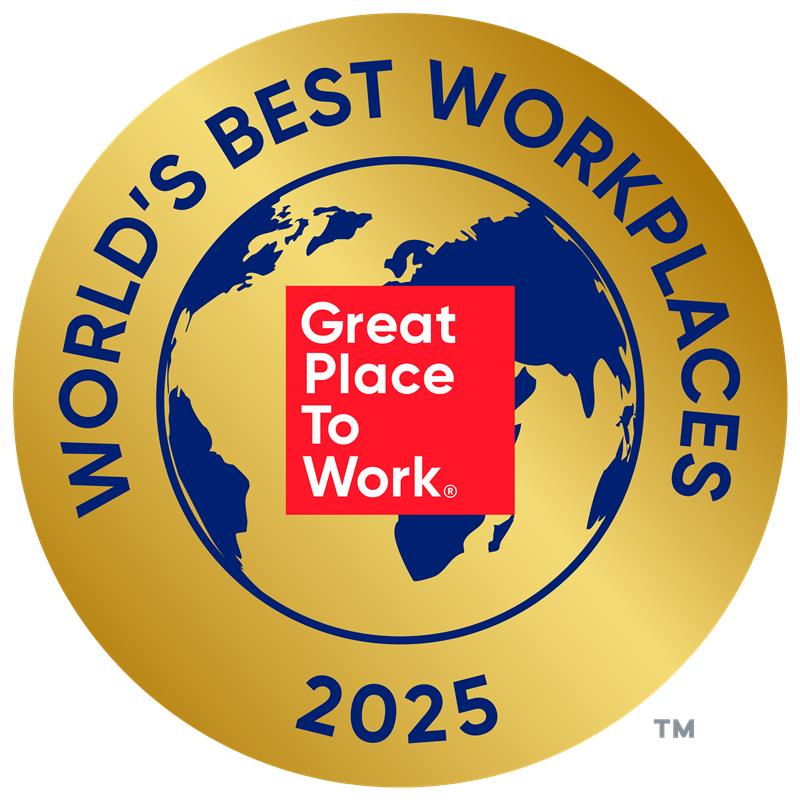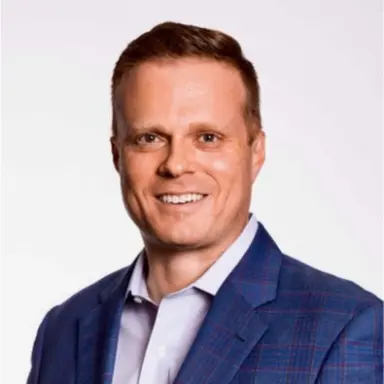
At Experian, we often say our people are our biggest superpower – and today, I’m thrilled to share that this belief has been recognised once again. Experian has been named one of the 2025 World’s Best Workplaces™ by Fortune and Great Place to Work® for the second year in a row.
This achievement reflects the culture we’ve built together – one that’s welcoming, inclusive, and rooted belonging. It’s a celebration of every colleague who brings their whole self to work, who lifts others up, and who powers opportunities for our clients, consumers, and communities.

We’ve made it our mission to create a workplace where everyone feels included, respected, and empowered. That’s why we’re proud to have earned top scores on the Corporate Equality Index and the Disability Equality Index, and to be recognised with the Outie Award for Workplace Excellence and Belonging.
These recognitions matter. But what matters most is how our people experience life at Experian. Whether it’s collaborating, innovating, or growing through world-class development of products, services and contributing to our communities, our culture is designed to help everyone thrive.
We’ve also made bold commitments to career development. Initiatives like Global Careers Week, the AI-driven performance coach Nadia, and the NextGen Forum – a global leadership development programme for emerging talent from across our regions – give our people the resources to take charge of their growth and build a “One Experian” mindset.
Being named one of the World’s Best Workplaces is a moment to celebrate but also a reminder to keep aiming higher. The world of work is evolving fast, and so are we. From embracing AI to enhancing our digital workplace experience, we’ll continue to push forward and listen to our people every step of the way.
Questions we will discuss:
- What does “retirement readiness” mean to you, and how can someone tell when they are financially ready to retire?
- Is there a magic number for retirement savings, and what factors should someone consider when setting a retirement goal?
- How can someone estimate their retirement expenses realistically?
- What are some common myths or misconceptions about how much money you need to retire?
- How should Gen Z, Millennials, and Gen Xers each approach retirement planning differently based on their stage of life?
- What are the biggest obstacles people face when trying to save for retirement, and how can they overcome them?
- How can you balance saving for retirement with paying off debt or supporting family today?
- What tools, calculators, or strategies can help people figure out if they’re on track for retirement?
- How can people prepare for unexpected costs or life changes that could impact their retirement plans?
- What’s one piece of advice you’d give someone just starting—or restarting—their retirement savings journey?
| Columns 1 | Column 2 | Column 3 | Column 4 |
|---|---|---|---|
| Row 1 Col 1 | |||
| Row 2 Col 1 | |||
| Row 3 Col 1 | |||
| Footer 1 | Footer 2 | Footer 3 | Footer 4 |

Credit Chat
Stretching your Dollars: Practical Tips to Cut Costs and Save More
February 5, 2025 3-4 PM ET
- What does “retirement readiness” mean to you, and how can someone tell when they are financially ready to retire?
- Is there a magic number for retirement savings, and what factors should someone consider when setting a retirement goal?
- How can someone estimate their retirement expenses realistically?

Greater transparency in buy now, pay later activity is key to helping consumers build their credit histories and supporting responsible lending. We have members of the military right now right out of high school and there’s not a lot of experience managing their own money. They’re quickly thrust into a place where they don’t have a support system to do that. We have members of the military right now right out of high school and there’s not a lot of experience managing their own money. They’re quickly thrust into a place where they don’t have a support system to do that. We have members of the military right now right out of high school and there’s not a lot of experience managing their own money. They’re quickly thrust into a place where they don’t have a support system to do that. We have members of the military right now right out of high school and there’s not a lot of experience managing their own money. They’re quickly thrust into a place where they don’t have a support system to do that. We have members of the military right now right out of high school and there’s not a lot of experience managing their own money. They’re quickly thrust into a place where they don’t have a support system to do that.
Experian North AmericaScott Brown, Group President, Financial Services

Experian Marketing Services, a recognized leader in data-driven marketing and cloud-based marketing technology, received top honors in five categories for the 2015 Email Marketing Awards. The awards competition was presented by The Marketer Quarterly, the digital magazine for marketers by marketers. Award submissions were judged by analysts from The Relevancy Group, the parent organization of The Marketer Quarterly, and by Marketing Democracy principal Chris Marriott. Experian Marketing Services received more awards than any other Email Service Provider (ESP): Best Reactivation Email — Retail: Boden, ESP — Experian Marketing Services and Movable Ink Best Reactivation Email — Consumer: American Home Shield, ESP — Experian Marketing Services and Epsilon (agency) Best Offer Email: Chico’s, ESP — Experian Marketing Services and Movable Ink Best Triggered Email — Retail: Ann Taylor, ESP — Experian Marketing Services Most Innovative Email: DIRECTV, ESP — Experian Marketing Services and RealTime Email by LiveClicker “We’re always looking to provide the most relevant, personalized content to our customers,” said Kellen Fitzgerald, brand marketing manager at Ann Taylor. “It’s great to be recognized for using our data to better the customer experience, and Experian Marketing Services really helps us optimize this strategy with its data technology and expertise.” “Even as a tried-and-true channel, email still has so much room for innovation. Working with Experian Marketing Services has helped us optimize our data-driven email strategy and focus on bringing that innovation to everything we do,” said Stephen Lamb, Director of Marketing, Digital Commerce, Chico’s FAS. “We’re excited to be recognized for this unique campaign, which resonated with customers and drove results.” “Email has always been a crucial component of the Experian Marketing Suite, and we’re honored to have been recognized in so many different categories for unique and innovative campaigns that helped our clients reach their most valuable customers,” said Ashley Johnston, senior vice president of global marketing at Experian Marketing Services. “In today’s marketing landscape, emails need to be consistent, personalized and relevant in order to attract attention. Our goal is to help our clients do just that.” Experian Marketing Services also was recognized earlier this year with seven 2015 Relevancy Ring Client Satisfaction Awards in The Relevancy Group’s 2015 report The Relevancy Ring — ESP Buyers Guide 2015. Experian® received two Gold awards in Production Services and Integration and five Silver awards in Infrastructure Stability, Creative Services, Technical Services, Deliverability Tools & Services, and Omnichannel Marketing Capabilities. Details about all the winning campaigns are featured in the cover story in Issue 8 of The Marketer Quarterly. To view the 2015 Email Marketing Awards winners, register for a free subscription to The Marketer Quarterly at http://www.marketerquarterly.com. “We’re very pleased that The Marketer Quarterly Email Marketing Awards are recognizing some of the best email creative in the business,” added Dianna Dilworth, editor of The Marketer Quarterly. “The work we reviewed in all of the submissions is a leading indication that not only is email marketing thriving, but it’s making a significant difference in the success of businesses around the globe.”

This article published in CIO Review magazine by Eric Haller, executive vice-president of Experian’s global DataLabs, discusses the science behind Big Data and how it can be used as a force for good. According to Haller, Big Data only becomes truly powerful when it is compiled, sorted, analyzed and manipulated – when it is translated into the language of business leaders and policymakers. And so the explosion of data has driven the emergence of fields built for the sole purpose of making data usable. View the full article here.

New research from Experian Marketing Services, a recognized leader in data-driven marketing and cloud-based marketing technology, shows that during the third quarter of 2015 email volume rose 24.8 percent year over year, while engagement rates matched or exceeded those in Q3 2014. The Experian Marketing Services’ Q3 2015 Email Benchmark Report notes: 37 percent of brands had a significant year-over-year increase in transaction rates and revenues per email Unique open rates were 17.5 percent in Q3 2015, up from 16.7 percent in Q3 2014 Unique click rates remained constant at 2.1 percent in Q3 of both 2014 and 2015 Smarter data-management practices are key to higher engagement According to Experian’s analysis, email volume increased year over year across all industries except publishing. “Scale can often be a marketer’s Achilles’ heel when it comes to email — increase your volume and expect to see a decrease in engagement and effectiveness. When we see the opposite — and our latest data shows that we’re seeing a shift — it’s a sign of data stewardship, leveraging data to drive smarter marketing decisions,” said Spencer Kollas, vice president of global deliverability services at Experian Marketing Services. “Transaction rates typically tend to be more sensitive to volume changes than open and click rates. The fact that retail brands are experiencing significant increases in transaction rates despite the increased volume means that they are properly segmenting their audience based on customer needs and delivering relevant messages and campaigns.” Significant volume increases continue during the 2015 holidays The peak days of the 2015 holiday season saw large year-over-year increases in volume, led by a 68 percent increase in travel emails and a 36.4 percent increase in emails from multichannel retailers. Email volume on Cyber Monday alone was 28 percent higher than in 2014. For the peak days from the Wednesday before Thanksgiving through the Tuesday after Cyber Monday, transactions were 22 percent higher than those seen last year. “More marketers are prioritizing deliverability tools and data-management technologies that help them deliver more relevant messages and offers to the right customers,” added Kollas. “When we look at the 2015 holiday data to date, retailers seem to be leading the industry when it comes to applying data to better segment and target messages. The engagement rates indicate that their customers are finding the offers relevant and useful, even as they hear more from these brands,” added Kollas. Flash sales had 59 percent higher transaction rates than average The Q3 2015 Email Benchmark Report featured a trend-to-watch section on flash sales, targeted sales that last less than 24 hours and promise customers great value during a limited time period. The report found that in the third quarter of 2015, flash sales had 59 percent higher transaction rates than the third quarter multichannel retail benchmark. In addition, revenue per email for flash sales was 29 percent higher than the Q3 2015 multichannel retail benchmark. A complimentary download of the full report is available here.
2024 Best Place to Work for Disability Inclusion


